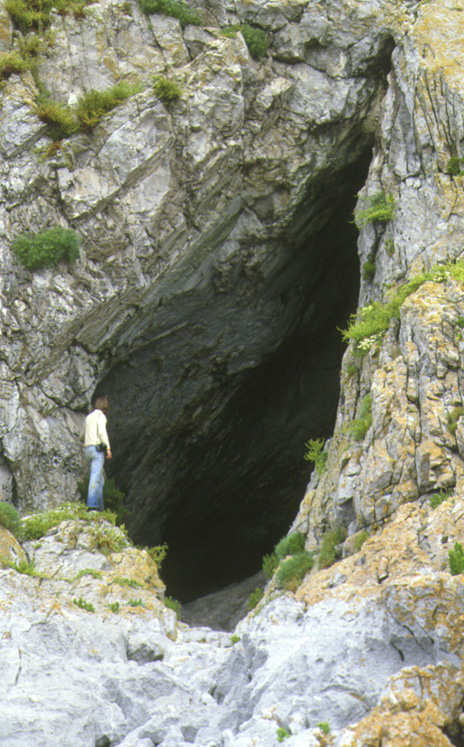
Background
Paviland Cave, originally known as Goat’s Hole, on the Gower Peninsula was the final resting place of William Buckland’s ‘Red Lady’, a skeleton that is now known to be male. Excavated in 1823, the ‘Red Lady’ was originally interpreted as Roman-aged, but it is in fact Upper Palaeolithic, associated with a mammoth, woolly rhinoceros, and hyaena fauna. The cave was used not only for the burial, but for other purposes as indicated by the more than 5,000 lithic artefacts that have been recovered from it. The oldest implements are leaf points, including a "Jerzmanowice" point from 38,000 to 36,000 radiocarbon years before present, but most are late Aurignacian in style. One interpretation is that the site was a sacred place visited periodically over a long period of time, but recent re-dating of key artefacts by Jacobi and Higham (2008) suggests that the period of human activity may have been much shorter.
Human fossils
This Gravettian burial was placed in a small alcove within a larger cave. Buried with the young adult male were grave goods: rods of mammoth ivory, intentionally broken before being laid on his body, and a mammoth skull apparently deliberately positioned at the head of the grave. Sewn within or suspended upon his now decayed clothing were pierced shells and ivory rings. Following interment, the bones soon became stained with red ochre pigment, perhaps from his red burial garb or perhaps added to the grave as a ritual gesture. The bones were then mistakenly believed to belong to a female of recent, possibly Roman, age and the individual was christened the ‘Red Lady of Paviland’. Although the misleading name stuck, we now know the death of this young man occurred around 34,000 years ago. At that time the imposing entrance to Paviland Cave was far from the coast, facing south over a large river floodplain – now the Bristol Channel – and towards the hills of present-day southwest England beyond.
|

